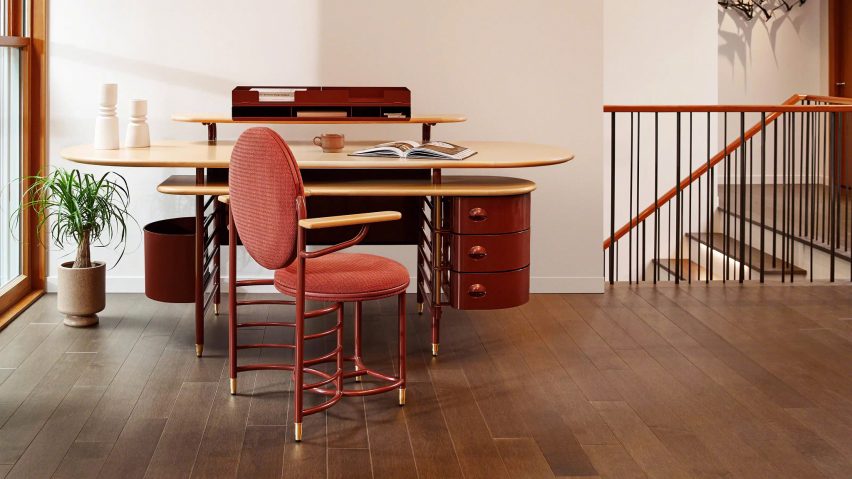
Steelcase launches furniture line based on Frank Lloyd Wright designs
American company Steelcase has used archival designs by architect Frank Lloyd Wright to create the Racine Collection, a line of home office furniture.
Steelcases' furniture line, which features desks and chairs, was named Racine Collection after the town where Wright created the SC Johnson Administration building in 1939. The building held the original versions of the furniture, which were also manufactured by Steelcase.

In collaboration with the Frank Lloyd Wright Foundation – the primary custodians of the American architect's archive – Steelcase developed the new designs over the course of two years, following the original closely.
Over Wright's 70-year career, during which he played a significant role in shaping modern architecture, he left behind thousands of designs and plans for buildings and furniture.
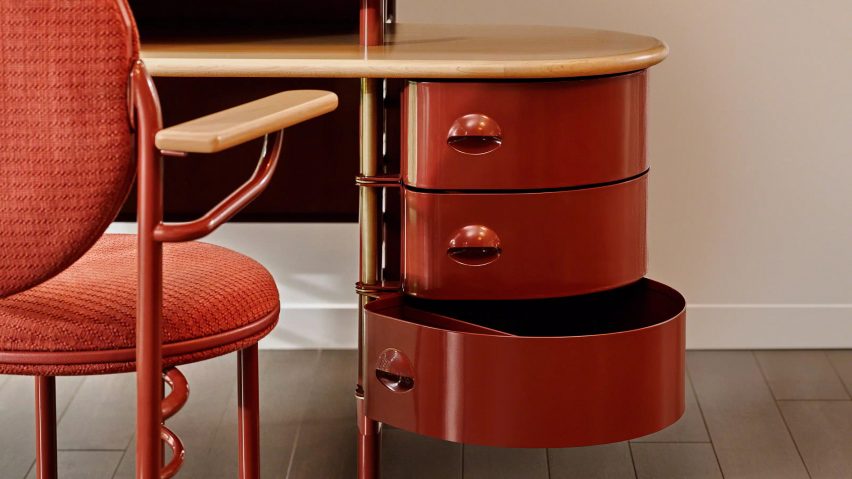
"Wright, fortunately, left us a guide," Frank Lloyd Wright Foundation CEO Stuart Graff told Dezeen. "Wright wanted people to embrace the principles and show what they were capable of doing."
The first items in the collection include desks, office chairs and lounges, all distilled from the designs used in the SC Johnson building.
The desks and chairs underwent a series of modifications, especially an increase in size, as Steelcase found that only 20 per cent of American men would have leg clearance in the original design.
The iconic three-legged chairs have also been modified to have four legs, due to stability concerns.
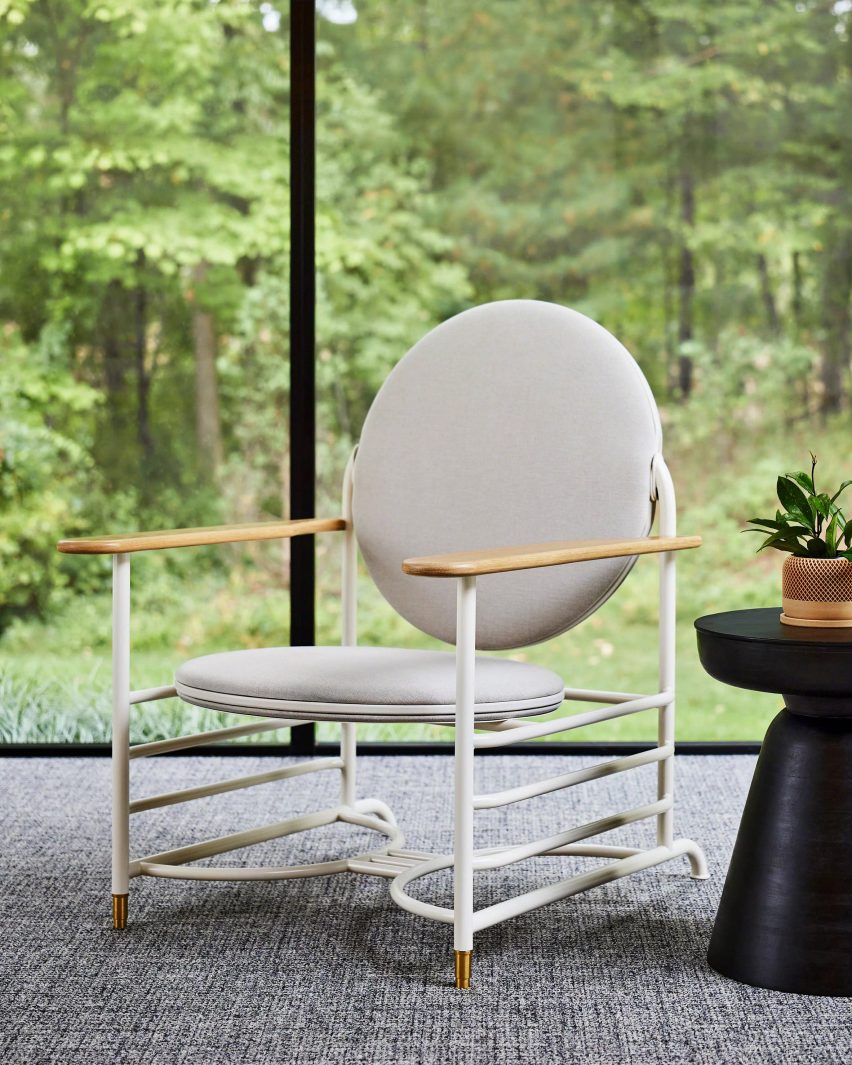
Small details, like changing the spring-operated drawers in the desks to magnets, were also implemented. Otherwise, the basic structure of the designs remains faithful to the originals.
"We have a shared commitment to excellence," general manager of partnerships at Steelcase Meghan Dean told Dezeen.
"But it was important to be in dialogue with the foundation and say 'hey, we have a better way' without affecting the original."
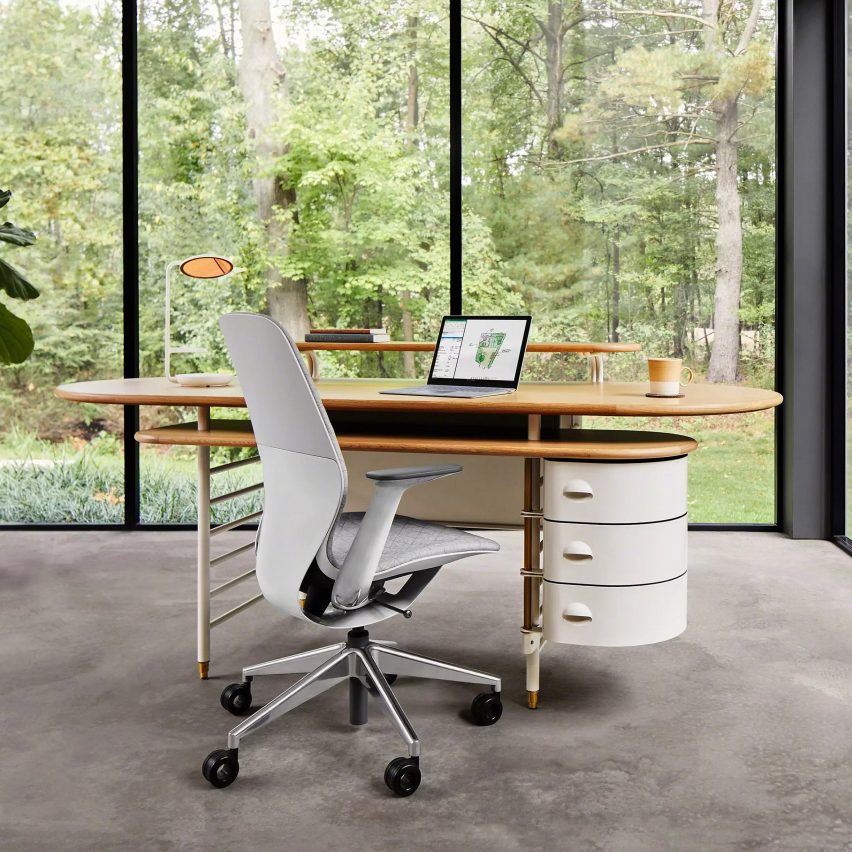
Using a palette derived from a photograph of Wright's pencil set, the collection will be available in a variety of different colours, including an all-black series. Another option includes the walnut and Racine red configuration of the original designs.
Graff said that the collection should be seen not as a remake but as a "reimagination" of the originals.
"Legacy is a living thing and not a backwards-looking art collection," he told Dezeen, adding that this is a departure from the foundation's earlier collaborations.
"In the past, the foundation has been more interested in slavish reproductions and hasn't given the freedom to recreate."
Graff and Dean also noted that this first iteration is "only the beginning" of the collaboration, and the team hopes to draw on Wright's vast archive to continue reimagining the original designs.
When asked why the foundation choose now, almost a hundred years on, to reinvent these designs, Graff said it comes from a need to "get back" to the principles of Wright's work.
"We've seen a lot of design that calls attention to itself but isn't in relation to the world around it," he said.
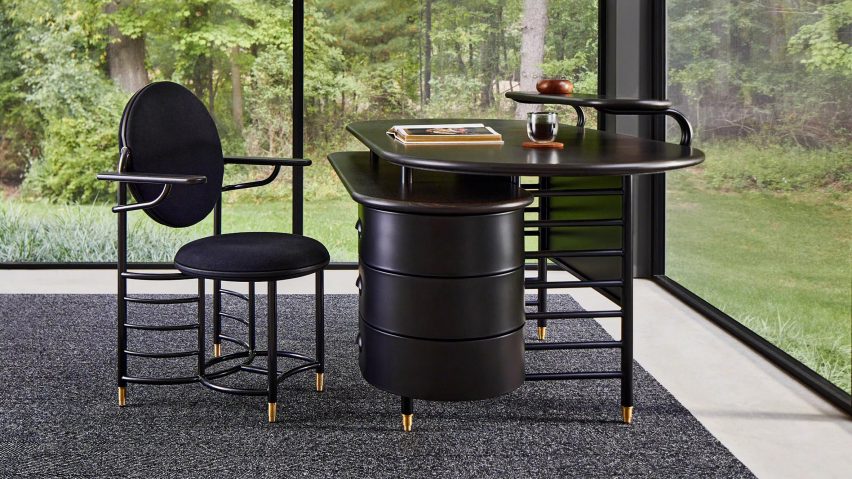
Architects and designers worldwide have held a continuing fascination with Wright's designs. Last week, Dezeen published the works of architect David Romero, who uses computer software to create renderings of buildings Wright designed but never built.
Other brands have launched their own reissues of Wright's furniture, including Cassina in 2018, which put out a remake of the Taliesin 1 armchair.